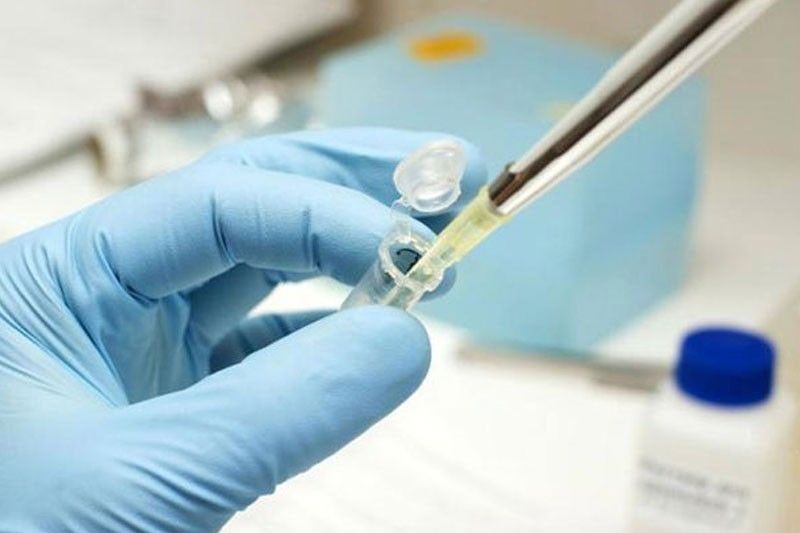DOH probing Philippines' 1st suspected case of coronavirus

Chinese boy in Cebu being tested for nCoV
MANILA, Philippines — The Department of Health (DOH) is looking into a suspected case of novel coronavirus or 2019-nCoV following the arrival last week of a five-year-old Chinese boy to learn English in Cebu City.
At a press conference yesterday, Health Secretary Francisco Duque III said the boy was admitted in a Cebu City hospital after showing signs of fever, throat irritation and cough, which he reportedly had prior to entering the Philippines.
The boy, who is from Wuhan province in China, arrived on Jan. 12 along with his mother. His mother did not show any symptoms of 2019-nCoV. Wuhan is the epicenter of the outbreak.
“The patient, as of (Jan. 21), is still experiencing cough but is currently stable and afebrile,” Duque announced.
He said samples taken from the boy were tested at the Research Institute for Tropical Medicine (RITM) and yielded negative results for Severe Middle East Respiratory Syndrome-Coronavirus (MERS-CoV) and Severe Acute Respiratory Syndrome (SARS).
However, the samples tested positive for the “non-specific pancoronavirus assay,” prompting the DOH to send the specimens to Victorian Infectious Disease Reference Laboratory in Melbourne, Australia “to identify the specific coronavirus strain.”
RITM director Celia Carlos said the “non-specific pancoronavirus assay” is a screening test for coronaviruses.
“So, that will turn out positive for SARS if SARS is present or MERS-CoV if MERS-CoV is present. But since we have a new or a novel coronavirus, probably there is a need for more specific tests to identify the strain,” Carlos added.
Coronaviruses are a large family of viruses ranging from the common cold to more serious infections such as MERS-CoV and SARS.
The common signs of coronavirus infection include respiratory symptoms, fever, cough, shortness of breath and breathing difficulties. In severe cases, it can cause pneumonia, acute respiratory syndrome, kidney failure and even death.
DOH director for Epidemiology Bureau Ferchito Avelino said since there are six known strains of the coronavirus, including MERS-CoV and SARS, the virus that infected the boy could be any of the four other strains of coronavirus and “not necessarily the 2019-nCoV.”
The DOH’s Bureau of Quarantine had already conducted a “contact tracing” among the boy’s co-passengers within four seats from his and found that none of them were showing symptoms.
Kalibo false alarm
Duque also reported that the three Chinese nationals separately put in quarantine upon arrival at the Kalibo International Airport in the past days turned out negative for 2019-nCoV.
The three, including a three-year-old boy, came from different provinces in China and were showing flu-like symptoms upon entering the country but did not have any history of travel to Wuhan. They also did not have any known contact with a confirmed 2019-nCoV or SARS patient or with sick animals.
“Throat samples from these patients were already sent to RITM for testing. All three cases are currently well and are no longer manifesting any symptoms,” Duque said.
Jessie Glen Alonsabe, Regional Epidemiology and Surveillance chief for Western Visayas, said there is no reason to panic as the quarantining process was standard operating procedure for the Bureau of Quarantine.
The three patients, who were supposed to go to Boracay Island, have been discharged from hospital.
At the Ninoy Aquino International Airport (NAIA), Bureau of Human Quarantine physician L.C. de Guzman said they have intensified the monitoring of arriving passengers, especially those coming from Hong Kong, Macau, Guangzhou, Shenzen, Beijing and Shanghai, which are the possible connecting routes from Wuhan, China where the mysterious fever came from.
Bureau of Immigration spokesperson Dana Krizia Sandoval has advised all their airport personnel to wear N95 masks as a preventive measure.
“As a preventive measure all officers in all ports of entry and exit were advised to wear masks as there is a risk of exposure given the nature of their jobs,” Sandoval said.
For his part, World Health Organization (WHO) country representative Rabindra Abeyasinghe said there is a possibility for “human-to-human transmission of 2019-nCoV” as demonstrated by the 14 hospital personnel in China who were “caring for sick people” and got infected.
“However, this is a premature situation at this point in time. We still need to understand better the mode of transmission and what needs to be done specifically for management,” he added.
Currently, there are 222 confirmed cases of 2019-nCoV, 218 of whom are in China. The rest are in Thailand, Japan and South Korea.
Beijing has asked countries to immediately inform them of suspected imported cases of the new coronavirus as it gave assurance that it is working with all parties to jointly tackle the epidemic and to safeguard regional and global health security.
Foreign Ministry spokesperson Geng Shuang said at a press conference in Beijing on Monday that the Wuhan government has taken measures to control the flow of people leaving the city.
Sen. Imee Marcos said there is need for a proactive stance in controlling the spread of the new virus as she called on officials of DOH, international airports and other government agencies to implement the necessary measures. – With Pia Lee-Brago, Jennifer Rendon, Paolo Romero, Evelyn Macairan, Rudy Santos
- Latest
- Trending
































